
Plants with Poisons and Stingers
Identifying Itchy Plants
Florida parks and woodlands are favorite places for many people who enjoy outdoor activities such as camping, hiking, fishing, and biking. Unfortunately, outdoor enthusiasts can come home from these places with unwelcome rashes and stings.
Knowing which plants to look out for can help you have an enjoyable experience outdoors.
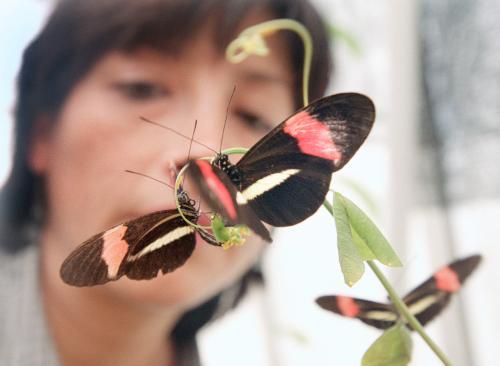
Quick Facts
- Poison toxins are found in the sap of the plants. Smoke from burning the plant may carry toxins as well.
- Contact with any of these plants can cause severe skin inflammation.
- “Contact” includes touching the plant; touching animals, clothes, or other items that have rubbed against the plant; and inhaling smoke from burned plants (which can cause respiratory complications).
- Symptoms may appear within a few hours or a few days. These include itching and burning of the skin, rash, redness, swelling, and watery blistering. Infection of the blisters can cause complications.
- Individuals vary in their sensitivity to these plants. Approximately 25% of the population is not sensitive, but repeated exposure may increase sensitivity.
Poison Ivy
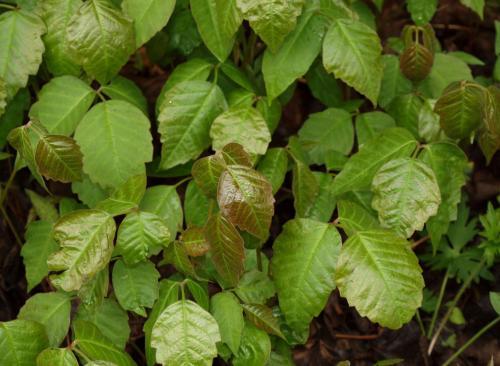
Poison ivy is the most commonly encountered poisonous plant in Florida’s natural areas. All parts of poison ivy, including the roots, are poisonous at all times of the year.
Identification
You can tell poison ivy by these traits:
- Woody shrub or vine with hairy-looking aerial roots.
- Grows to 10 feet or more, often climbing on trees, walls and fences, or trails along the ground.
- Found in a variety of environments from deep woods to exposed hillsides. Plants are most abundant along old fence rows and edges of paths and roadways.
- "Leaves of three, let it be." Leaf forms vary among plants—or even on the same plant—but leaves almost always consist of three leaflets.
- Flowers and fruit grow in clusters on slender stems between the leaves and woody twigs.
- Berrylike fruits usually have a white, waxy appearance.
Lookalikes: Virginia Creeper

The most common poison ivy lookalike is Virginia creeper, but often you can easily tell the difference. Use the following listed characteristics to distinguish it from poison ivy:
- Leaves divided into five leaflets that are palmate, like an outstretched hand.
- Blue-black berries along the stem.
- Trailing or climbing vine.
Poison Oak
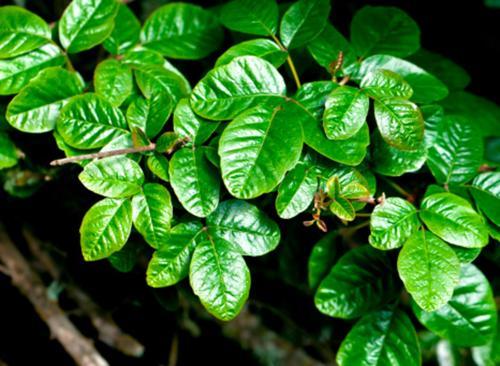
Poison oak, sometimes known as "oakleaf poison ivy," is more distinctive than other types of poison ivy.
Identification
Use these characteristics to tell if a plant is poison oak:
- Generally grows as a low shrub with upright stems.
- Lobed leaves, similar to some types of oak leaves. Occurs in sets of three leaflets like poison ivy.
- Size range of leaves varies, even on the same plant.
Poison Sumac
Poison sumac is also known as swamp sumac, poison elder, poison ash, poison dogwood, and thunderwood. It does not have variable forms like those of poison ivy.
Identification
Look for these features to identify poison sumac:
- Coarse woody shrub or small tree with branched stems. Never grows in a vine-like form.
- Ranges in height from 5 to 25 feet.
- Associated with swamps and bogs. Grows along the edges of areas with wet acid soil.
- Leaflets are arranged in pairs along the midrib with a single leaflet at the end.
- Leaflets are elongated ovals without marginal teeth or serration and have a smooth, velvety texture.
- Bright orange in early spring, green with scarlet midribs in summer, and red-orange in fall.
- Small yellow-green flowers grow in clusters on stems sprouting from leaf axes along smaller branches.
- Ivory-white or green fruits, similar to poison oak or poison ivy, but less compact and hang in loose clusters.
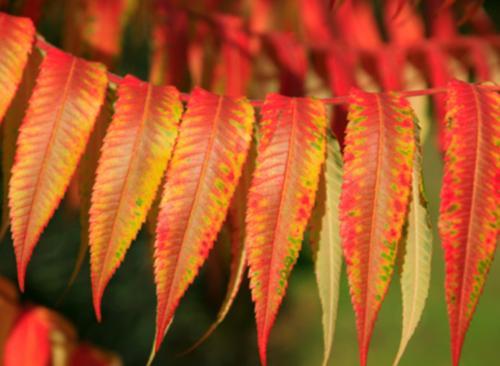
Lookalikes
Throughout most of the range where poison sumac grows, three nonpoisonous species may also occur: smooth sumac, staghorn sumac, and dwarf sumac.
- All three have red fruits that form a distinctive terminal seed head, not the slender hanging clusters found in poison sumac.
- Smooth and staghorn sumac have many leaflets (usually more than 13), which are narrow and lance-shaped.
- Dwarf sumac has fewer leaflets and a winged midrib. Poison sumac never has the wing margin on the midrib.
Stinging Plants
Quick Facts
- Plants have stiff hairs on stems and leaves.
- Hairs contain irritants that are injected into the skin when the hairs break.
- Stinging can cause rash, bumps, burning sensations, and swelling; symptoms usually have a short duration, but rash may persist for a few days.
- Plants are used in herbal remedies and food recipes. Boiling breaks down the stinging compounds.
- Greens from Urtica species are used as a spinach-like food; Cnidoscolus species have edible tubers.
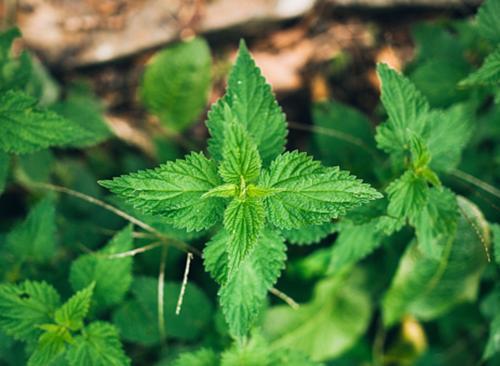
Nettles (Urticaceae)
These plants are annual and perennial herbs. Common names include stinging nettle, fireweed, heart-leaf nettle, and dwarf nettle.
Identification
Look for the following characteristics to identify nettles:
- Weak, erect stems branching from base.
- Opposite triangular or heart-shaped leaves with toothed margins.
- Flower clusters in leaf axils. Can be elongate or spherical. Flowers bloom spring to summer.
- Prefers rich humus soils. Often found in floodplains, woods, disturbed areas, and farm yards.
- Growth habits can vary depending on whether plants grow in shady or sunny areas.
Cnidoscolus (Euphorbiaceae)
Cnidoscolus stimulosus is a perennial herb in the spurge family, also called bull-nettle, tread-softly, and spurge-nettle.
Identification
Cnidoscolus plants have these characteristics:
- Tuberous roots and milky sap.
- Erect to reclining stems. Stems can be branched or unbranched.
- Green, toothed alternate leaves; palmately divided into three to five lobes.
- Tubular white flowers in a cluster on the terminal end of stem. Flowers have five petal-like structures.
- Flowers form bristly seed capsule with three seeds.
- Plant blooms all year in Florida.
- Prefers dry, sandy areas. Found in sandhills, dry woods, beaches, scrub, roadsides, fields, and lawns.
For questions with plant identification, contact your local Extension agent.
Adapted and excerpted from:
P. Grace and S. Lowe, Identification of Poison Ivy, Poison Oak and Poison Sumac in Florida (ENH886), Environmental Horticulture Department (4/2003).
W. Zomlefer, Stinging Nettles of Florida: Urtica (HB002), UF Herbarium (rev. 12/2011).
W. Zomlefer, Stinging Nettles of Florida: Cnidoscolus (HB003), UF Herbarium (rev. 12/2011).
Sustainability And Conservation
Related Sites & Articles
Hot Topics
Other Sites & Publications
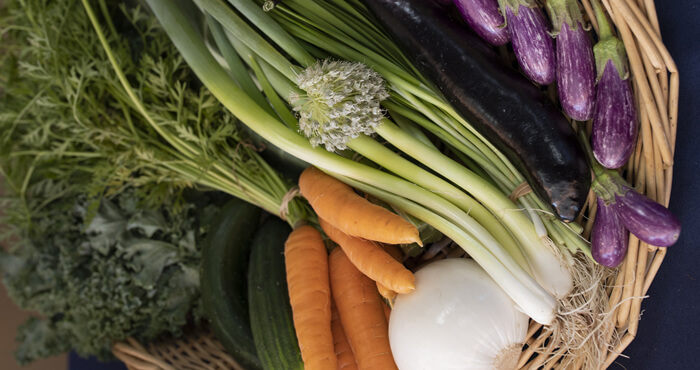
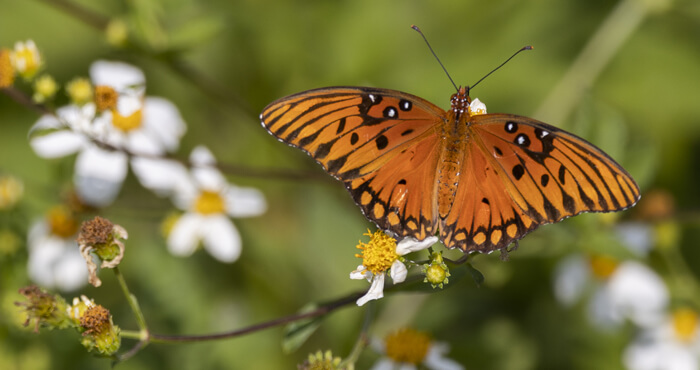
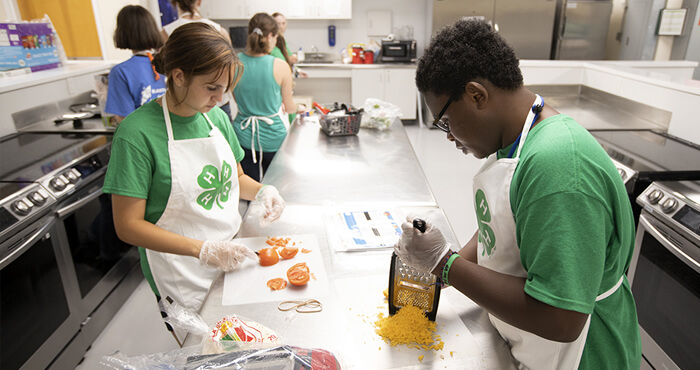
.jpg)
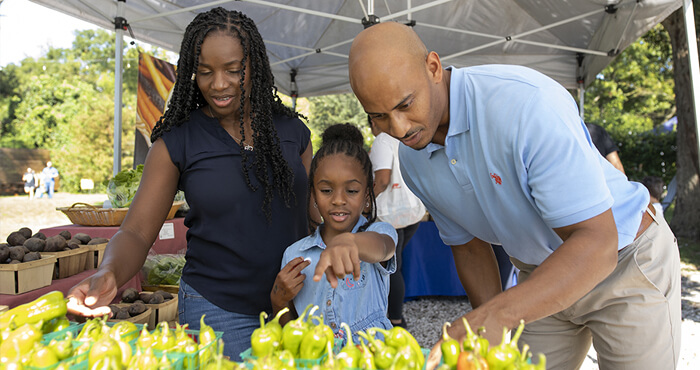
.jpg)